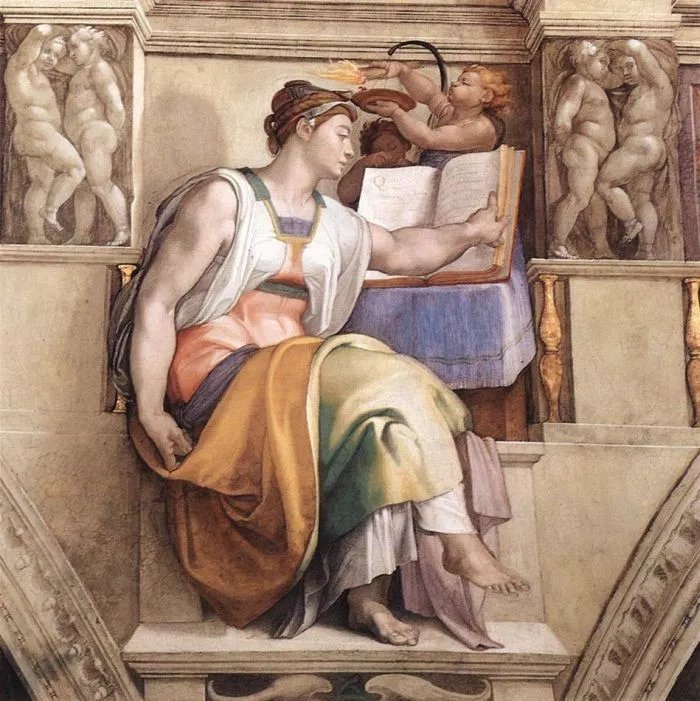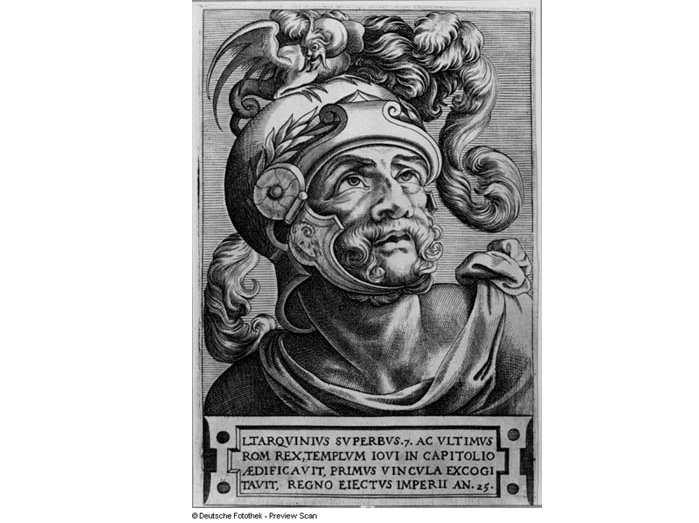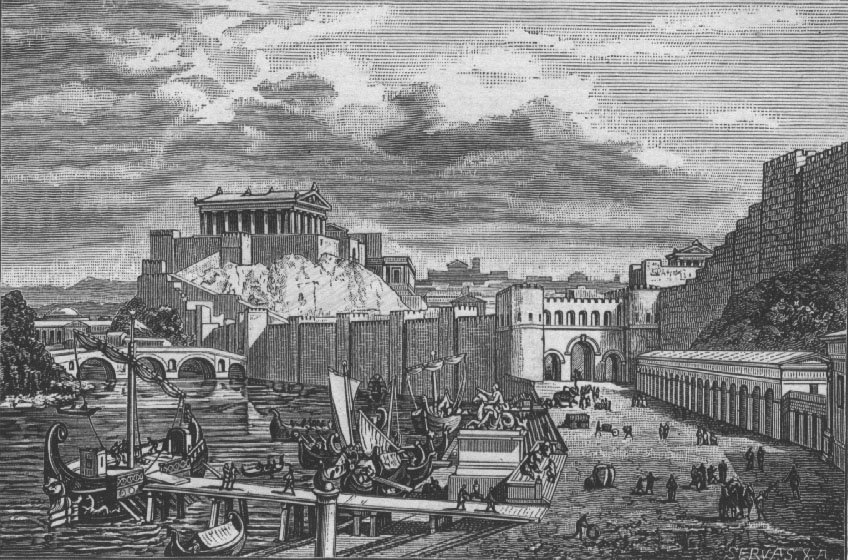Sibylline Books: Ancient Prophecies Destroyed By Fire
Ellen Lloyd - AncientPages.com - Very little is known about the original Sibylline books. The original Sibylline books were closely-guarded oracular scrolls written by prophetic priestesses (the Sibylls) in the Etruscan and early Roman Era as far back as the 6th Century B.C.E. These books were destroyed, partially in a fire in 83 B.C.E., and finally burned by order of the Roman General Flavius Stilicho (365-408 C.E.).
Who was Cumaean Sibyl?
Cumaean Sibyl was a priestess residing over the Apollonian oracle at Cumae, a Greek colony located near Naples, Italy. The word sibyl comes (via Latin) from the ancient Greek word sibylla, meaning prophetess. In the ancient world there were a number of sibyls active in various locations. Sibyls would give answers whose value depended upon good questions - unlike prophets who typically answered with responses indirectly related to questions asked.
Michelangelo's rendering of the Erythraean Sibyl.
The Cumaean Sibyl became the most famous among the Romans. In ancient Greece, the Erythraean Sibyl became well-known and the Sibyl of Dodona, possibly dating to the second millennium BC according to Herodotus, favored in the east.
Lucius Tarquinius Superbus purchases the Sibylline books
According to legend, Lucius Tarquinius Superbus the legendary seventh and final king of Rome bought the books from Cumaean Sibyl.
When Cumaean Sibyl approached Lucius Tarquinius Superbus she offered him 9 scrolls, but he didn’t want to buy them because they were too expensive.
Tarquinius tried to negotiate about the price, but Sibylle refused to sell the scrolls cheaper. Instead, she tossed three of the books into the fire.
For the six remaining books she asked the same price as she had asked for the nine books.
Lucius Tarquinius Superbus
Tarquinius was very displeased about this and made a remark about the scrolls and price. Sibylle responded again by tossing three of the books into the fire. At this point, Tarquinius got worried he would have to leave empty handed. He accepted and paid the price for three remaining although he could have had nine books for the same price.
Whether this story is true or not, remains unknown. It is possible Tarquinius invented this story to defend himself why he had paid too much for the three books.
Sibylline books were closely guarded and consulted at momentous crises
According to the Roman tradition, the oldest collection of Sibylline books appears to have been made about the time of Solon and Cyrus at Gergis on Mount Ida in the Troad. From Gergis the collection passed to Erythrae, where it became famous as the oracles of the Erythraean Sibyl. It would appear to have been this very collection that found its way to Cumae and from Cumae to Rome.
The Sibylline Books. Illustration for Hutchinson's History of the Nations (Hutchinson, c 1915).
The Roman Senate kept tight control over the Sibylline Books. The Sibylline books were closely guarded and kept in a room beneath the Temple of Jupiter on the Capitol.
In times of great dangers these books were consulted by the decemviri sacris faciundis (ten-men). The decemviri sacris faciundis held office for life, and were exempt from all other public duties. They were responsible for keeping the books in safety and secrecy.
These officials, at the command of the Senate, consulted the Sibylline Books in order to discover not exact predictions of definite future events in the form of prophecy but the religious observances necessary to avert extraordinary calamities such as for example comets and earthquakes, showers of stones and plague.
19th century illustration depicting the temple above the Tiber River during the Roman Republic.
It was only the rites of expiation prescribed by the Sibylline Books, according to the interpretation of the oracle that were communicated to the public, and not the oracles themselves, which left ample opportunity for abuses.
The Sibylline books were composed in Greek hexameter and the college of curators was always assisted by two Greek interpreters.
The destruction of the Sibylline books
When the Temple of Jupiter burned in 83 BC, they were lost. The Roman Senate sent envoys in 76 BC to replace them with a collection of similar oracular sayings, in particular collected from Ilium, Erythrae, Samos, Sicily, and Africa. This new Sibylline collection was deposited in the restored temple.
See also:
Ancient Roman Government Structure And The Twelve Tables
The Egyptian Dream Book Reveals Ancient Predictions Of The Future
From the Capitol the books were later transferred by Augustus as pontifex maximus in 12 BC, to the temple of Apollo Patrous on the Palatine. They were examined and copied and remained there until about AD 405. According to the poet Rutilius Claudius Namatianus, the general Flavius Stilicho (died AD 408) burned them, as they were being used to attack his government.
Only fragments of the Sibylline books have survived.
The Sibylline Books should not be confused with the so-called Sibylline Oracles, which contained twelve books of prophecies thought to be of Judaeo-Christian origin.
Copyright © AncientPages.com & Ellen Lloyd All rights reserved. This material may not be published, broadcast, rewritten or redistributed in whole or part without the express written permission of AncientPages.com and Ellen Lloyd
Expand for referencesMore From Ancient Pages
-
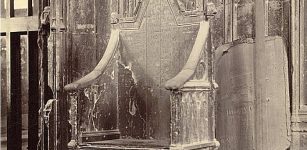 Stone Of Scone: Mysterious Stone Of Destiny Has Turbulent Ancient History
Artifacts | Mar 19, 2016
Stone Of Scone: Mysterious Stone Of Destiny Has Turbulent Ancient History
Artifacts | Mar 19, 2016 -
 Ancient Secrets Of Sacred Towers And Stone Circles In Colorado Where Spirits Of Native Americans Still Live
Civilizations | Mar 19, 2017
Ancient Secrets Of Sacred Towers And Stone Circles In Colorado Where Spirits Of Native Americans Still Live
Civilizations | Mar 19, 2017 -
 Dramatic Life Story Of Queen Marie Antoinette Executed By Guillotine During The French Revolution
Featured Stories | Oct 18, 2021
Dramatic Life Story Of Queen Marie Antoinette Executed By Guillotine During The French Revolution
Featured Stories | Oct 18, 2021 -
 Mystery Of The Banshee – Is The Celtic Death Messenger Linked To The Tuatha De’Dannan Race?
Celtic Mythology | Oct 25, 2015
Mystery Of The Banshee – Is The Celtic Death Messenger Linked To The Tuatha De’Dannan Race?
Celtic Mythology | Oct 25, 2015 -
 On This Day In History: The Battle Of Benevento Was Fought – On February 26, 1266
News | Feb 26, 2017
On This Day In History: The Battle Of Benevento Was Fought – On February 26, 1266
News | Feb 26, 2017 -
 Notre Dame Is On Fire! Can The Magnificent Cathedral Still Be Saved?
News | Apr 15, 2019
Notre Dame Is On Fire! Can The Magnificent Cathedral Still Be Saved?
News | Apr 15, 2019 -
 Årsgång – Year Walk In The Forest – Mystical Journey To Gain Knowledge About The Future – An Ancient Swedish Ritual
Ancient Traditions And Customs | Jan 2, 2019
Årsgång – Year Walk In The Forest – Mystical Journey To Gain Knowledge About The Future – An Ancient Swedish Ritual
Ancient Traditions And Customs | Jan 2, 2019 -
 Forbidden Ancient Manuscripts Almost Erased From History – Secret Teachings Of Mysterious Founder – Part 1
Artifacts | May 10, 2018
Forbidden Ancient Manuscripts Almost Erased From History – Secret Teachings Of Mysterious Founder – Part 1
Artifacts | May 10, 2018 -
 Unique Ancient Half-Mummy Unearthed In Luxor, Egypt Mystifies Archaeologists
Archaeology | Jun 6, 2022
Unique Ancient Half-Mummy Unearthed In Luxor, Egypt Mystifies Archaeologists
Archaeology | Jun 6, 2022 -
 Enigma Of Ancient Upside Down Stairs At Sacsayhuamán
Featured Stories | May 27, 2014
Enigma Of Ancient Upside Down Stairs At Sacsayhuamán
Featured Stories | May 27, 2014 -
 Elysian Fields: Mysterious Resting Place For Heroic And Virtuous Souls In Greek Ancient Beliefs
Featured Stories | Feb 20, 2020
Elysian Fields: Mysterious Resting Place For Heroic And Virtuous Souls In Greek Ancient Beliefs
Featured Stories | Feb 20, 2020 -
 The 426-Km-Long Roman Aqueduct Provided Water For Constantinople – New Study
Archaeology | May 11, 2021
The 426-Km-Long Roman Aqueduct Provided Water For Constantinople – New Study
Archaeology | May 11, 2021 -
 First Crusade Was Launched In 1095
Ancient History Facts | Jun 19, 2018
First Crusade Was Launched In 1095
Ancient History Facts | Jun 19, 2018 -
 Cats In The Middle Ages: What Medieval Manuscripts Teach Us About Our Ancestors’ Pets
Featured Stories | Dec 24, 2022
Cats In The Middle Ages: What Medieval Manuscripts Teach Us About Our Ancestors’ Pets
Featured Stories | Dec 24, 2022 -
 Gordian Knot And How Alexander The Great Managed To Outmaneuver The Problem
Featured Stories | Jul 19, 2024
Gordian Knot And How Alexander The Great Managed To Outmaneuver The Problem
Featured Stories | Jul 19, 2024 -
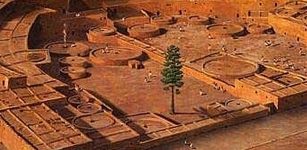 Ponderosa Pine: Life And Death Of One Of America’s Most Mysterious Trees
News | Mar 18, 2020
Ponderosa Pine: Life And Death Of One Of America’s Most Mysterious Trees
News | Mar 18, 2020 -
 New Clues About The Fascinating Ancient Roman City Falerii Novi Revealed By Scientists
Archaeology | Sep 13, 2022
New Clues About The Fascinating Ancient Roman City Falerii Novi Revealed By Scientists
Archaeology | Sep 13, 2022 -
 Bizarre Event – Why Did Hundreds Of Individuals Suddenly Freak Out At A Cemetery?
Featured Stories | May 30, 2023
Bizarre Event – Why Did Hundreds Of Individuals Suddenly Freak Out At A Cemetery?
Featured Stories | May 30, 2023 -
 Mysterious Balochistan Sphinx Has An Ancient Story To Tell – But Is An Advanced Ancient Civilization Or Mother Nature Hiding Behind The Story?
Featured Stories | Feb 3, 2018
Mysterious Balochistan Sphinx Has An Ancient Story To Tell – But Is An Advanced Ancient Civilization Or Mother Nature Hiding Behind The Story?
Featured Stories | Feb 3, 2018 -
 Blue Eyed People In Northern Israel 6,500 Years Ago: New DNA Results
Archaeology | Aug 22, 2018
Blue Eyed People In Northern Israel 6,500 Years Ago: New DNA Results
Archaeology | Aug 22, 2018

